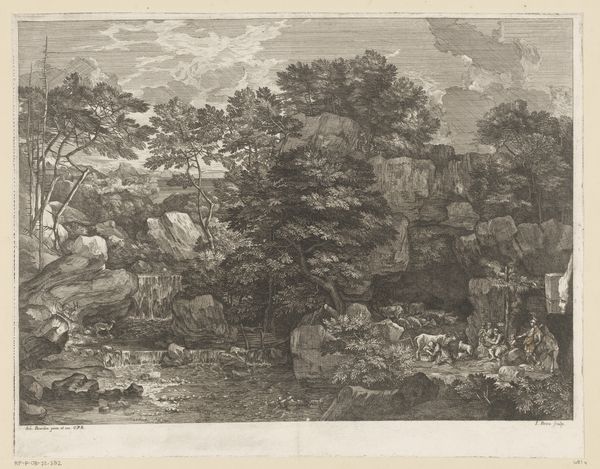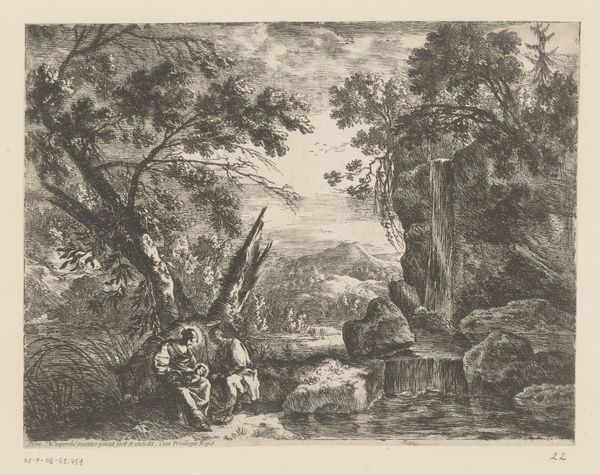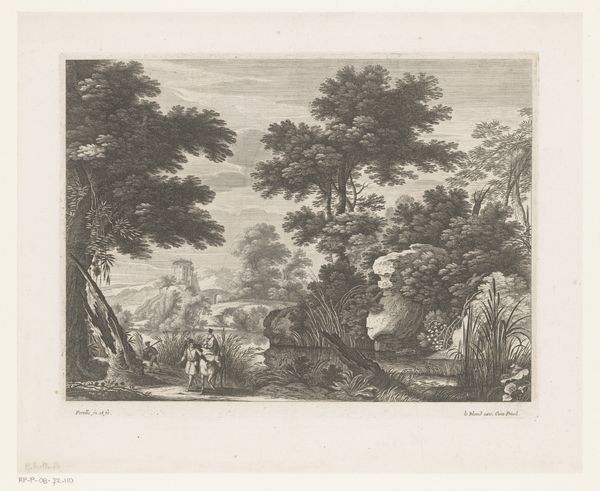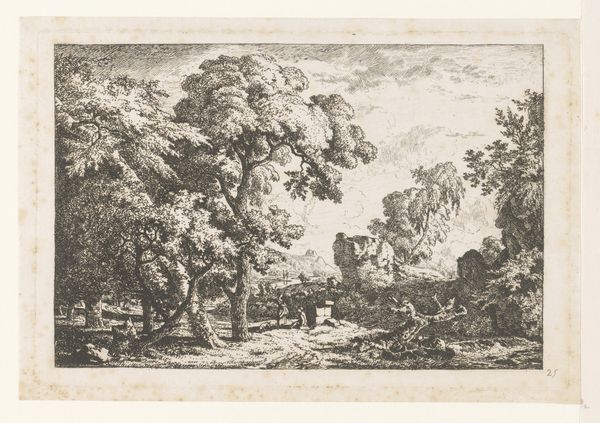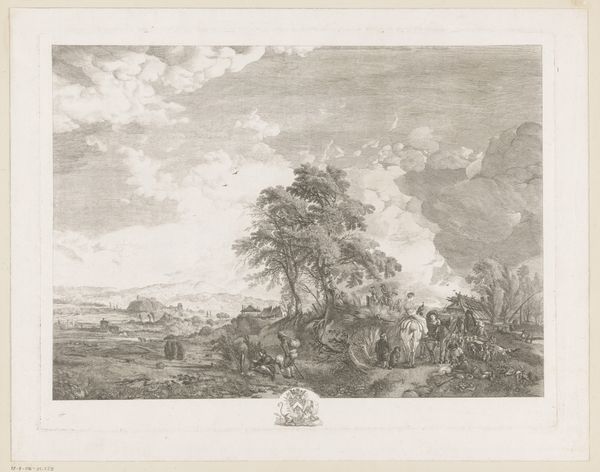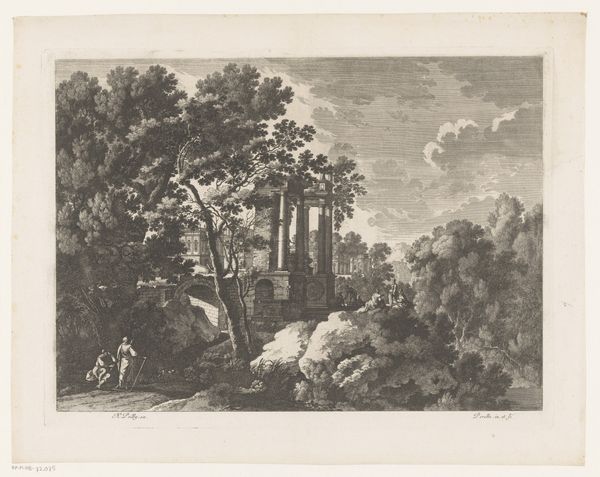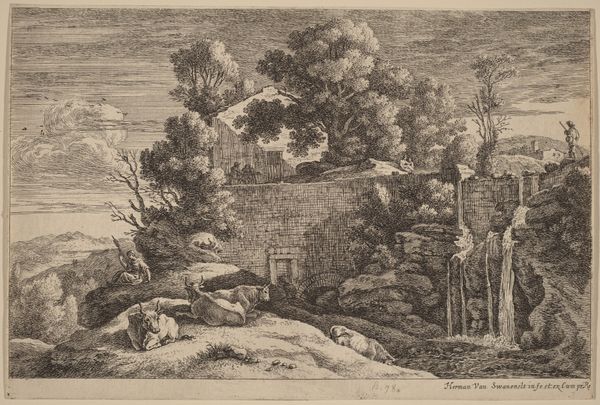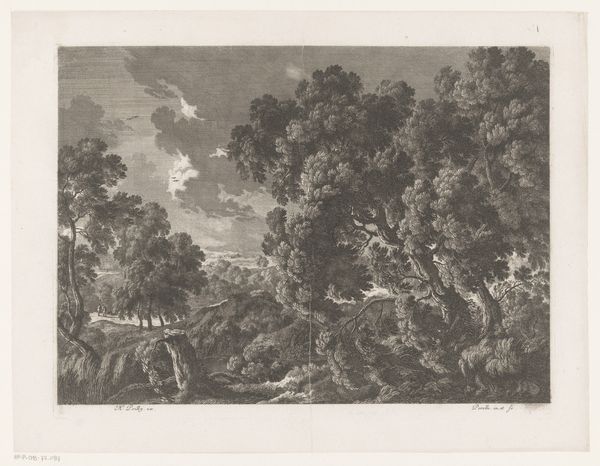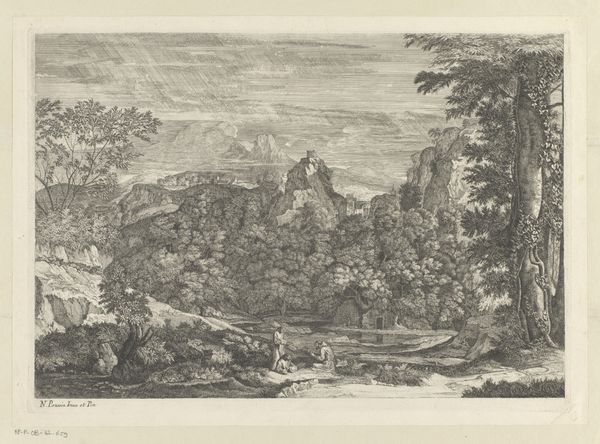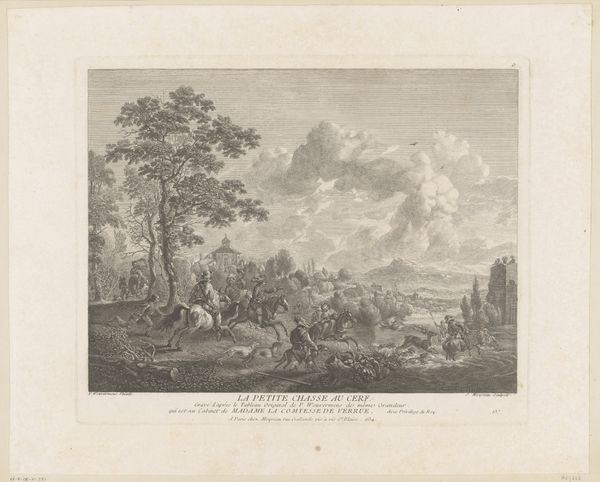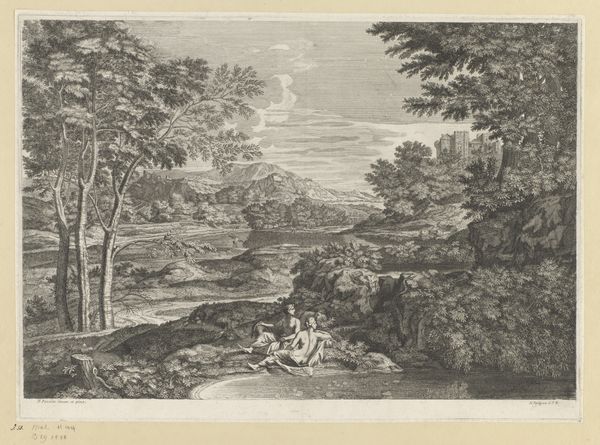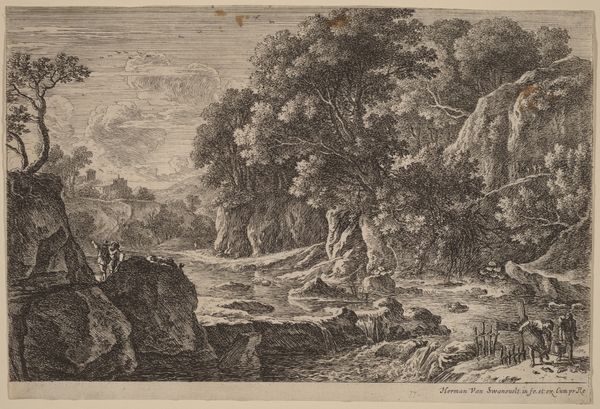
print, etching
#
aged paper
#
toned paper
#
light pencil work
#
baroque
# print
#
etching
#
landscape
#
personal sketchbook
Dimensions: height 365 mm, width 472 mm
Copyright: Rijks Museum: Open Domain
Jacques Prou created this River Landscape with Cascades and Several Monks in the late 17th century using etching and engraving. These printmaking processes are rooted in craft. The artist would have first coated a metal plate with a waxy, acid-resistant substance, then scratched an image into it with a pointed tool. Next, the plate would be submerged in acid, which bites into the exposed lines, creating grooves. Ink is then applied to the plate, filling these grooves, and finally, the image is transferred to paper under high pressure using a printing press. The distinct character of the image comes from this process. Look closely and you can see the fine lines and cross-hatching that define form, texture, and light. These marks are a direct result of the artist's hand working with tools on the metal plate. The final print is not just an image, but a record of the artist's labor, skill, and intimate relationship with the materials. Understanding how this print was made allows us to move beyond simply appreciating the image and think more deeply about the creative process. It challenges us to reconsider the traditional hierarchy between fine art and craft.
Comments
No comments
Be the first to comment and join the conversation on the ultimate creative platform.
